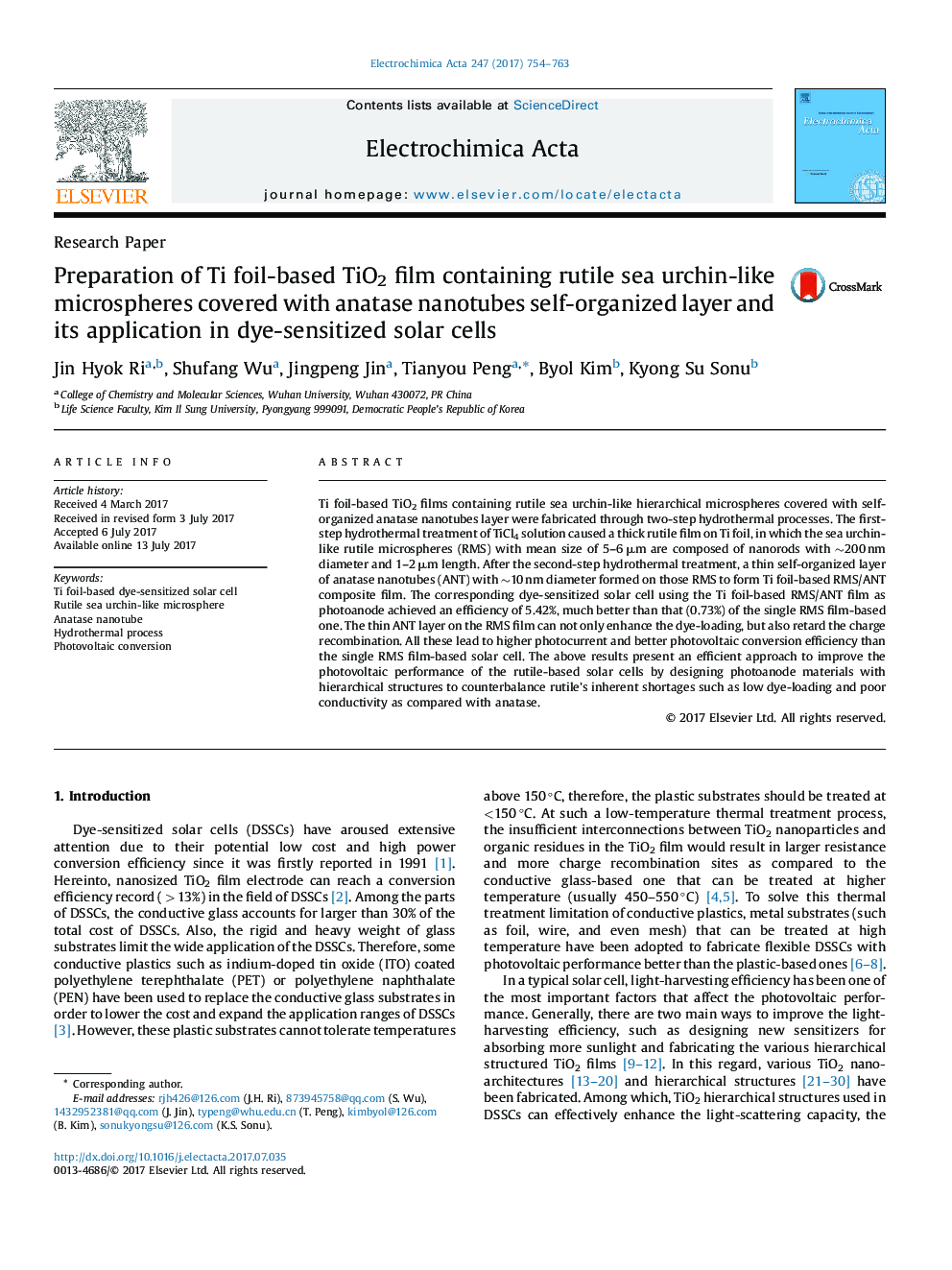| کد مقاله | کد نشریه | سال انتشار | مقاله انگلیسی | نسخه تمام متن |
|---|---|---|---|---|
| 6471102 | 1424110 | 2017 | 10 صفحه PDF | دانلود رایگان |

- Ti foil-based TiO2 composite film containing rutile and anatase phases is prepared.
- Rutile TiO2 sea urchin-like microspheres is covered by anatase nanotubes layer.
- Anatase nanotubes layer on rutile microstructures can enhance the electron lifetime.
- Composite film-based cell shows better efficiency than the rutile film-based one.
Ti foil-based TiO2 films containing rutile sea urchin-like hierarchical microspheres covered with self-organized anatase nanotubes layer were fabricated through two-step hydrothermal processes. The first-step hydrothermal treatment of TiCl4 solution caused a thick rutile film on Ti foil, in which the sea urchin-like rutile microspheres (RMS) with mean size of 5-6 μm are composed of nanorods with â¼200 nm diameter and 1-2 μm length. After the second-step hydrothermal treatment, a thin self-organized layer of anatase nanotubes (ANT) with â¼10 nm diameter formed on those RMS to form Ti foil-based RMS/ANT composite film. The corresponding dye-sensitized solar cell using the Ti foil-based RMS/ANT film as photoanode achieved an efficiency of 5.42%, much better than that (0.73%) of the single RMS film-based one. The thin ANT layer on the RMS film can not only enhance the dye-loading, but also retard the charge recombination. All these lead to higher photocurrent and better photovoltaic conversion efficiency than the single RMS film-based solar cell. The above results present an efficient approach to improve the photovoltaic performance of the rutile-based solar cells by designing photoanode materials with hierarchical structures to counterbalance rutile's inherent shortages such as low dye-loading and poor conductivity as compared with anatase.
279
Journal: Electrochimica Acta - Volume 247, 1 September 2017, Pages 754-763